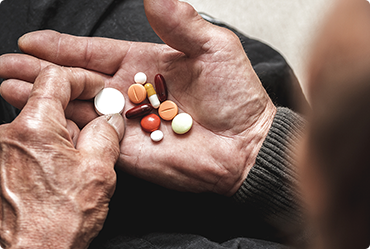At the end of April, we published a summary of the global response to COVID-19 as written by a selection of FingerPost’s Global Associates who specialise in Market Access across different countries. The summary (available here) provided a brief overview of the statistics as they were at the end of April, measures implemented to reduce the outbreak and any other impact (political, economic or social) on each market as a result of the pandemic. This was a valuable snapshot ahead of the first steps taken to ease ‘lockdown’ measures across Europe and the US. However, this was far from the end of the pandemic and there was still a lot of uncertainty surrounding when and where ‘second wave’ outbreaks would occur.
Two months on, we have now published a follow up to the report to capture the continued impact of the pandemic. During this time, we have seen widespread outbreaks of COVID-19 shift from Europe and North America, through to Latin America, India and Pakistan. Brazil, in particular, is one of the worst hit with no sign that the pandemic has reached its peak. Meanwhile, widespread resurgences of the virus have also been documented in the US and Asia, as per the predictions for ‘second wave’ outbreaks. Local surges have also been documented in most of the countries ‘recovering’ from the initial outbreak but these are being managed via local restrictive measures, as well as nationalised tracing programs.
Various regulations have been relaxed to help ensure rapid access to medicines, devices, healthcare apps and personal protective equipment to help treat those with COVID-19, protect healthcare workers and prevent or identify further outbreaks. For example, in Spain protective masks that do not bear the appropriated CE mark (NIOSH or KN95) can now be commercialised. Many countries have also centralised pricing and supply/distribution systems to ensure an adequate supply of medicines.
Remdesivir has now received EMA and FDA marketing authorisation for COVID-19, and will be distributed by Gilead for patients on government-sponsored insurance in the US and other countries with national healthcare systems. In India and 126 other low- and middle-income countries, four Indian companies have been granted non-exclusive licences to produce remdesivir for distribution.
As the pandemic shows no sign of slowing on a global level, there are strong hopes for the 17 candidate vaccines in clinical evaluation and 132 in pre-clinical evaluation. AstraZeneca has already started to manufacture a vaccine that has been co-developed with scientists at Oxford University, which will be supplied to low- and middle-income countries via a licensing agreement with Serum Institute of India (SII). This is a big risk as they won’t know until August whether the AZD1222 vaccine will be effective. Similarly, in the United Arab Emirates, the Abu-Dhabi-based Group 42 (G42) are partnering with the Chinese pharmaceutical giant Sinopharm China National Biotec Group (CNBG) to commercialise and develop a vaccine. And in Germany, €750 million has been allocated by the government to go towards vaccine development and to aid the international Coalition for Epidemic Preparedness Innovations.
Despite the COVID-19 pandemic, there is still a need to keep bringing other medicines to market. This is recognised by the majority of health technology assessment (HTA) agencies, who have continued to evaluate new treatments throughout the various ‘lockdowns’. However, the Scottish Medicines Consortium (SMC) have experienced some delays and now expect to resume their meetings in August. Likewise, in Canada, the pan-Canadian Pharmaceutical Alliance (pCPA) have indicated that some negotiatons may be temporarily put on hold or delayed.
At FingerPost, we anticipate a more challenging Market Access environment over the next few years. Firstly, a number of ‘non-urgent’ medical appointments (e.g. cancer screening, minor surgeries, GP appointments) have been postponed throughout the pandemic. This is likely to have long-term consequences for the management of chronic conditions. Secondly, those who have ‘recovered’ after receiving intensive care for COVID-19 symptoms are likely to require long-term support to manage the damage left by the virus, the extent of which is largely unknown. And finally, financing COVID-19 is likely to take it’s toll on global healthcare systems, exerting additional pressure on pricing and reimbursement negotiations to reduce the cost of medicines.
If you’d like to read more about the global impact of COVID-19 as of the 30th June 2020, you can download our latest ‘Global snapshot of COVID-19’ report below for free. The report contains summaries for 22 different global markets, with key insight from the FingerPost team and our Global Associates. I’d like to say a big thank you to all of the authors who contributed content to this report and hope you find the summaries as interesting as I did.


